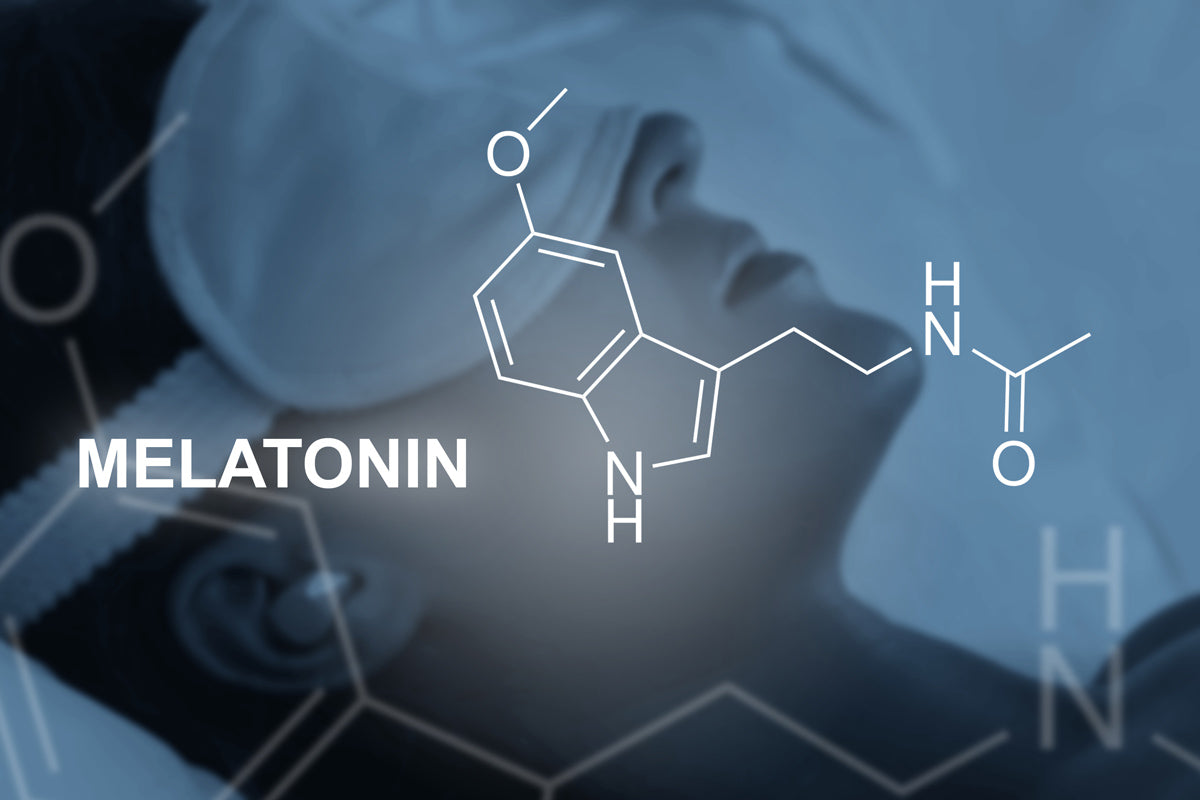by Michael Donaldson, PhD
Introduction
In the webinar “Melatonin: Beyond the Sleep Aid” research was presented showing that melatonin reverses the Warburg Effect. Evidence for this is found directly in laboratory animals as well as results in people dealing with cancer as well as a variety of neurological diseases, metabolic disorders and infectious onslaughts by viruses and bacteria.
It was mentioned that 10 to 20 mg of melatonin would be plenty to reinforce your body’s production of melatonin at night. But a daytime dose was also mentioned.
To gain a better understanding of supplementing with melatonin, it would be helpful to see how melatonin levels change over time under normal (unsupplemented) and supplemented conditions in people. The purpose of this short article is to show you what is generally known about melatonin and gather into one place the data strewn across several research papers over decades of work in different laboratories. This article will give you the insights you need to understand natural melatonin secretion and supplemented levels of melatonin.
Natural Melatonin Time Course

Figure 1. 24-hour plasma melatonin rhythm in 5 young men and 5 elderly men.
First, here are two graphs comparing 24-hour melatonin levels in young and old men and young and old women (1). Sunset at the time of this study was between 5:30 and 6:30 pm. Young men and women had overall higher levels of melatonin and earlier onset of elevated levels shortly after sunset compared to the older men and women. Melatonin levels were elevated for about 12 hours in young men and women. Young men had a peak around 110 pg (picogram)/ml while elderly men had a peak melatonin concentration around 65 pg/ml. Young women had a peak around 125 pg/ml while elderly women had a peak concentration around 60 pg/ml. Research, not shown here, with intermediate ages from the same article showed a strong correlation between age and melatonin secretion by the pineal gland. These graphs, from an article published in 1986, shows generally what the normal melatonin time course is in people.

Figure 2. 24-hour plasma melatonin rhythm in 7 young women and 5 elderly women.
Peak Levels of Nightly Melatonin by Age

Figure 3. Nighttime melatonin levels in 367 people.
Here is a graphic of findings of melatonin levels in people of various ages (2). Blood samples were taken at night during peak secretion of melatonin by the pineal gland. You can see a general decline with age. However the greatest drop is in children before puberty as children grow in size. There are more people with healthy levels of melatonin in their 20s and 30s than in their 70s and 80s, but only a few elderly people still produce significant levels of melatonin. Notice the scale on the vertical axis. It is in pg/ml. The figures after this using supplemental melatonin have an axis of nanogram/ml (ng/ml). 1 ng/ml is 1,000 pg/ml.
Supplemented Melatonin Levels over Time
In the next figure women were given 6 mg of melatonin, actually during the day so that pineal gland secretion of melatonin would not interfere with the measurements (3). However, the amount secreted by the pineal gland is so much smaller that it would not have interfered, but sampling during the day is still more convenient for everyone. The first thing to notice in Figure 4 is that it didn’t matter too much whether the women were pre- or post-menopausal. Second, the peak at about 12 ng/ml occurred about 30 minutes after taking the melatonin. Absorption of melatonin into the circulation is very fast. Third, the levels of melatonin go back down to near zero between 4 and 5 hours after taking melatonin. This study did not use a time release tablet.

Figure 4. Mean (±SEM) plasma concentrations of melatonin after an oral dose of 6 mg in 10 premenopausal and 8 post-menopausal healthy female volunteers. Note that 10 ng/ml would be equal to 12,000 pg/ml in Figure 1, which is much, much higher than amounts secreted by the pineal gland.
In Figure 5 the experiment was conducted with 12 healthy Mexican volunteers using a 5 mg long-acting capsule (4). Here the peak is slightly lower than the level seen in Figure 4, about 8 ng/ml, but the elevated levels of melatonin were sustained for more than 12 hours. The peak concentration was delayed to beyond 2 hours, but elevated levels were seen at 15 minutes after taking melatonin. So, this kind of formulation and delivery would give a person elevated melatonin all night and then into the next morning as well.

Figure 5. Plasma profile of 5 mg of long-acting capsule’s melatonin in 12 healthy volunteers (mean ± standard error).
Finally, here is a time course in Figure 6 comparing a fast-release tablet with 2 tablets with different amounts of slower release contents (5). The fast release melatonin had a peak of about 4.6 ng/ml (20 pmol/ml) at about 30 minutes after taking melatonin, with a return to zero at about 4 hours post supplement. This time course is very similar to what was seen in Figure 4 with women taking 6 mg of melatonin. The two bi-modal tablets also had a first peak at 30 minutes, but at a lower amount of about 3 ng/ml. The time release second part of the tablet had another peak at about 3.5 hours post supplement with a decrease to zero melatonin at about 8 hours post supplement. The peak was higher for formulation C, probably because more of the formula (7.5 mg versus 5 mg) was in a slower release format.

Figure 6. A (5 mg fast release melatonin), B (5 mg fast release, 5 mg slow release melatonin) and C (2.5 mg fast release, 2.5 mg controlled release, 5 mg slow release melatonin). N=15 men.
There are fast release formulas on the market, as well as time release formulas and 2-part tablets with a bimodal release. A bimodal tablet has an outer layer that dissolves quickly, then an inner layer that is slowly dissolved over time. From this article you can see that a fast release supplement will last about 4 hours in the circulation, while a time release could last more than 8 or 12 hours.
How to Supplement with Naturally Occurring Concentrations of Melatonin
Some healthy people not struggling with overcoming a life-threatening or serious health condition might want to supplement melatonin with amounts that are in line with our usual biology. Even a 1-mg tablet gives a response that is supraphysiological, or way beyond what is normally experienced from pineal gland secretions. Here is how this can be done.
First, some background information is needed. In one of the experiments mentioned in the webinar on melatonin, in order to get blood with which to perfuse (pass blood through) tumors with physiological levels of melatonin, women took 75 µg (micrograms) of melatonin (6). Blood was collected 1 hour later. Levels were about 590 pg/ml, or about 5-6 times as high as peak nightly levels seen in healthy young adults (see Figures 1, 2 and 3). So, even very small doses can be used to mimic or supplement nightly secretion of melatonin by the pineal gland. The level from 75 µg is close to what we are looking for, but still too high. The idea here is to dilute melatonin enough to get a very small dose that can be repeated if desired.
Melatonin is stable in water. Researchers have found that melatonin, even at low concentrations of 1 µg/ml was stable for at least 48 hours at room temperature or up to 6 months in a refrigerator or frozen (7).. The most important criteria is keeping bacteria from growing in the water. Using distilled water would minimize bacterial growth, though other purified or bottled water would also work.
Summary
From this article you learned what normal secretion of melatonin looks like during the night for young and elderly men and women. You can see how peak melatonin levels drop as people age, perhaps confounded by ill health as well. You can see the time course of a 6-mg supplement, a long-acting 5-mg supplement, and a two-stage 10-mg melatonin supplement. Finally, a method to mimic physiological concentrations of melatonin at night using liquid melatonin supplement was disclosed.
There are many ways to supplement with melatonin, with fast-release tablets, gummies, or liquids and time-release two-layered tablets. One good option is Pure Encapsulation's Melatonin 3mg. Or a healthy person can sleep in the dark without any light during the night and get melatonin naturally. If a person is already fighting a chronic disease, it can safely be assumed that he or she is not getting enough melatonin and should consider supplementing with this very safe and effective natural supplement. Even daytime melatonin at very low levels might be beneficial for reversing the Warburg Effect 24 hours a day.
References
- Nair NPV, Hariharasubramanian N, Pilapil C, Isaac I, Thavundayil JX (1986) Plasma melatonin—An index of brain aging in humans? Biol Psychiatry 21:141–150. doi: 10.1016/0006-3223(86)90141-1
- Waldhauser F, Weiszenbacher G, Tatzer E, Gisinger B, Waldhauser M, Schemper M, et al (1988) Alterations in nocturnal serum melatonin levels in humans with growth and aging. J Clin Endocrinol Metab 66:648–652. doi: 10.1210/jcem-66-3-648
- Markantonis SL, Tsakalozou E, Paraskeva A, Staikou C, Fassoulaki A (2008) Melatonin pharmacokinetics in premenopausal and postmenopausal healthy female volunteers. J Clin Pharmacol 48:240–245. doi: 10.1177/0091270007311112
- Lopez M, Canales-Gómez J, Castro T, Tovar E, Mejía M (2010) Bioavailability of Long Acting Capsules of Melatonin in Mexican Healthy Volunteers. J Bioequivalence Bioavailab. doi: 10.4172/jbb.1000042
- Hoffmann A, Farker K, Dittgen M, Hoffmann H (1999) A melatonin preparation with a pulsatile liberation pattern: a new form of melatonin in replacement therapy. Biol Signals Recept 8:96–104. doi: 10.1159/000014576
- Mao L, Dauchy RT, Blask DE, Dauchy EM, Slakey LM, Brimer S, et al (2016) Melatonin suppression of aerobic glycolysis (Warburg effect), survival signalling and metastasis in human leiomyosarcoma. J Pineal Res 60:167–177. doi: 10.1111/jpi.12298
- Cavallo A, Hassan M (1995) Stability of melatonin in aqueous solution. J Pineal Res 18:90–92. doi: 10.1111/j.1600-079x.1995.tb00145.x








